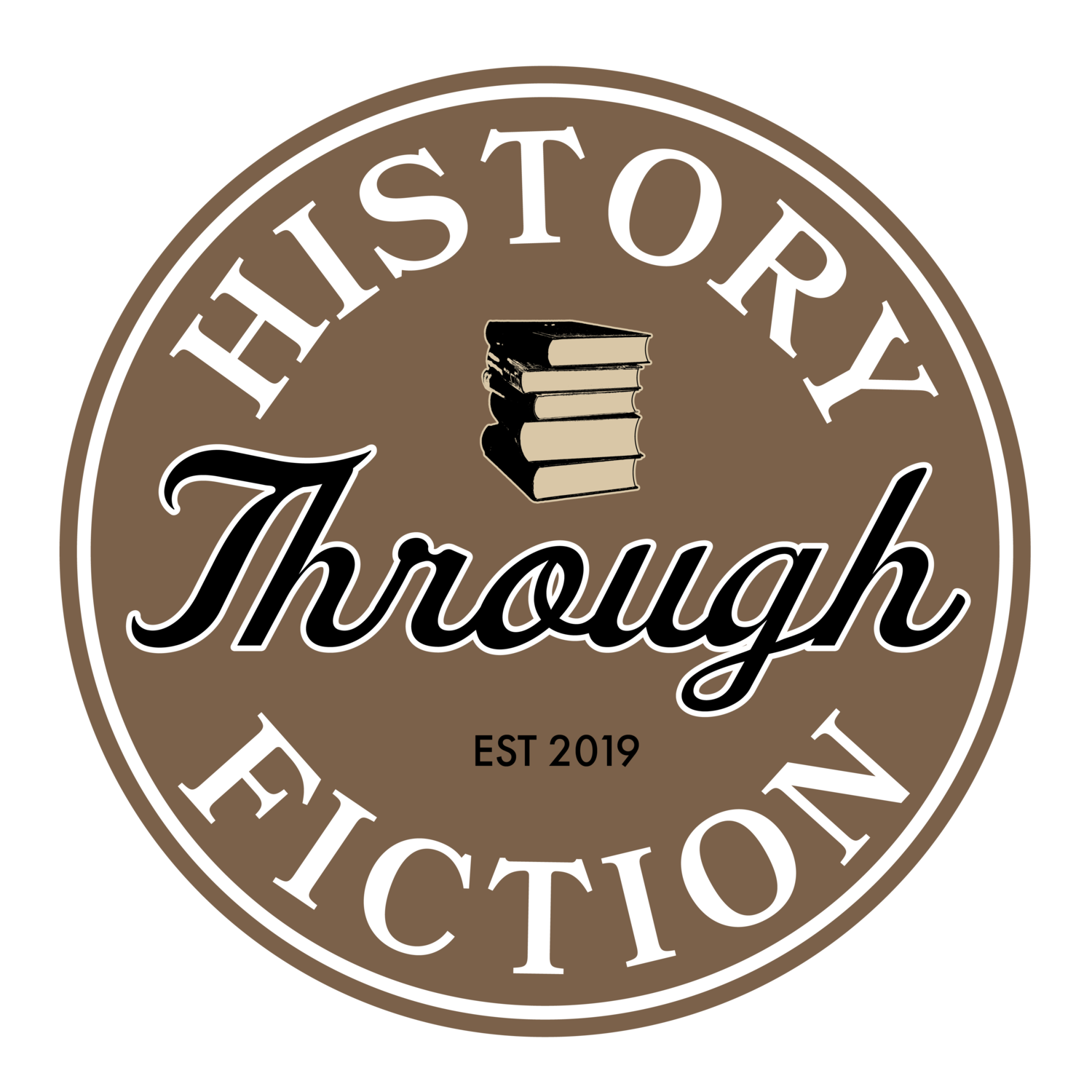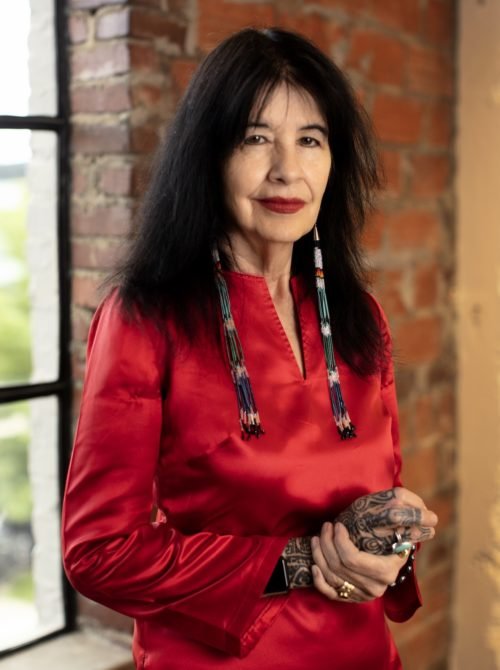Joy Harjo: Mapping Nations through Poetry
“Poetry is the voice of what can’t be spoken, the mode of truth-telling when meaning needs to rise above or skim below everyday language in shapes not discernible by the ordinary mind. It trumps the rhetoric of politicians. Poetry is prophetic by nature and not bound by time. […] Poetry is a tool for disruption and creation and is necessary for generations of humans to know who they are and who they are becoming in the wave map of history. Without poetry, we lose our way.”
– Joy Harjo, “An Interview with Joy Harjo, U.S. Poet Laureate” (Poets.org)
Photo: Matika Wilbur
In 2019, poet, author, musician, and member of the Muscogee (Creek) Nation, Joy Harjo, became the first Native American appointed as U.S. Poet Laureate. When asked what she hoped to accomplish in her new role, Harjo responded by evoking imagery of a tree with limbs reaching into a limitless beyond. She called it a “poetry ancestor tree,”[i] connecting ancient Indigenous voices to each poem (old and new) that has emerged from the land now called the United States.
“Every poem has so many ancestors,” she said while pondering how she might construct this tree, this lineage of American poetry. “I’ve always wanted to show that, ultimately, there’s a root system that’s connected all over the Americas, which is one body.” Harjo conveyed that the roots and early branches of American poetry are the songs of ancient Indigenous peoples—their stories, experiences, and poetic expressions—all of which have continued to evolve through the voices of modern Native poets, those safeguarding their ancestors’ memories and ushering them onward.
As a tree cannot be separated from its roots, neither can American poetry be disjointed from its Native Nations voices. So, with this initial sentiment, Harjo devoted her new position to giving voice and recognition to Native Nations poets across the United States, imploring through her poetry:
You are a story fed by generations
You carry songs of grief, triumph
Loss and joy
Feel their power as they ascend
Within you
As you walk, run swiftly, even fly
Into infinite possibilities
– Joy Harjo, “Prepare”
Over the course of her three terms in service, Harjo’s initial vision of a tree’s roots and limbs transformed into cartographic lines, contours, and landmarks. Her signature project as the 23rd U.S. Poet Laureate culminated in an interactive map featuring the poetry of Indigenous tribes across the country. Housed in the Library of Congress’s Digital Collections, Harjo’s project, titled “Living Nations, Living Words: A Map of First People’s Poetry,” is accompanied by an online collection of audio-recorded readings and discussions from 47 contemporary Native American poets, and an anthology called, Living Nations, Living Words: An Anthology of First Peoples Poetry.
Centered on the lands comprising the modern United States, Harjo’s map moves viewers first from the eastern part of the country, then to the north, the west, and finally the south, according to Muscogee (Creek) tradition.
“East is the direction of becoming, the sunrise place,” she writes. And there on the map, Harjo showcases the work of poets from Mohawk, Tuscarora, Cheyenne, and Hodulgee Muscogee Nations, currently living and working in eastern United States. These artists include, Eric Gansworth, Alex Jacobs, and Suzan Shown Harjo.
Moving north, “the direction of testing and teaching,” she outlines the works of poets from White Earth Anishinaabe, Chippewa, Meskwaki, Ojibwe, Osage, Crow, Assiniboine & Sioux, and Suquamish Nations. Among the many artists abiding in this northern region are Ray Young Bear, Louise Erdrich, and Henry Real Bird.
In the west, “the direction of endings, of leaving,” she highlights several Kanaka Maoli poets, as well as those from CHamoru, Inupiaq, Cherokee, Ohlone-Costanoan Esselen, Warm Springs, Pima, and Shoshone Nations, all living and writing in western United States. Among them are Imaikalani Kalahele, Mahealani Perez-Wendt, Cathy Tagnak Rexford, and nila northSun.
Finally, in the south, “the direction of gathering together for celebration,” Harjo features writers from Mojave, Akimel O’otham, Tohono O'odham, Diné (Navajo), Oglala Lakota, Duckwater Shoshone, Pyramid Lake Paiute, Southern Ute, Yapaituka Comanche, Southern Arapaho, Choctaw, Yuchi, and Muscogee (Creek) Nations. Amomg the many poets listed here are Jennifer Elise Foerster, Ofelia Zepeda, Layli Long Soldier, and Sherwin Bitsui.
Although ultimately captured in the form of a map, Harjo’s poetry tree is ever apparent. It lives and grows in the collective works of her showcased artists, in the emerging voices of poets only now scratching pen across paper. And between the hidden pages of journals that may never be discovered. It lives in every modern Native voice singing their ancestors’ song, telling history through raw, unbiased verse. Relaying stories passed down from generations before. Chaos, ashes, fear, pain summed in several lines. Truth, healing, wholeness released in a refrain. With each new Native voice rising through the din of American discourse the tree’s branches grow, and its roots run deeper. Harjo’s vision is an endless legacy.
Joy Harjo concluded her third and final term as the 23rd U.S. Poet Laureate in 2022. She currently lives in Tulsa Oklahoma where she continues to give voice to Native Nations through her music, poetry, and performance.
[i] The quotes in this post are derived from the Poets.org interview with Joy Harjo, titled “An Interview with Joy Harjo, U.S. Poet Laureate,” and from Harjo’s signature project, “Living Nations, Living Words: A Map of First People’s Poetry.”
Want to help us support Indigenous storytelling? Please consider making a contribution to the Reclaiming Mni Sota Indigenous Writers Grant.
About the Author
Bex Roden is a voluntary contributor to History Through Fiction. She is an aspiring literary artist with an interest in historical fiction. She has a formal education in English Literature centered on literary analysis and criticism, and is now expanding her focus into the realm of creative writing. Currently, Roden is an active-duty service member in the U.S. Air Force and writes in her free time.




